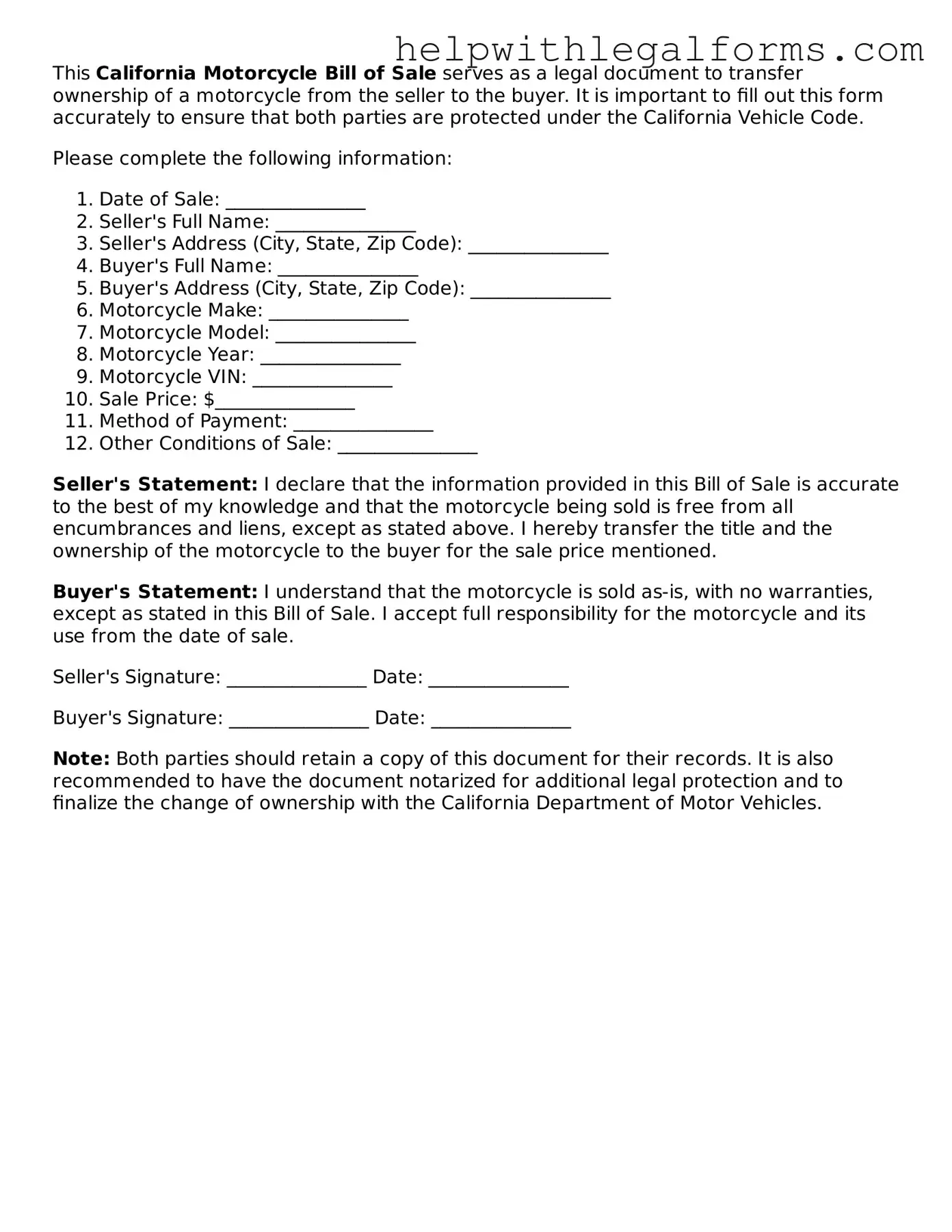What is a Motorcycle Bill of Sale?
A Motorcycle Bill of Sale is a legal document that records a transaction between a seller and buyer for the sale of a motorcycle. It serves as proof of purchase and shows the transfer of ownership from the seller to the buyer.
Why do I need a Motorcycle Bill of Sale in California?
In California, a Motorcycle Bill of Sale is not only essential for personal records but also required for the registration and titling process of the motorcycle with the DMV. It legally documents the transaction and protects both parties if any disputes arise.
What information should be included in a Motorcycle Bill of Sale?
The document should include the names and addresses of both the seller and the buyer, the motorcycle’s make, model, year, VIN (Vehicle Identification Number), mileage, sale date, and purchase price. Signatures of both parties are also necessary.
Do both parties need to sign the Motorcycle Bill of Sale?
Yes, for the Motorcycle Bill of Sale to be valid in California, both the seller and the buyer must sign the document. It's also recommended to have the signatures notarized, though it's not a legal requirement.
Is a notary required for a Motorcycle Bill of Sale in California?
Although notarization is not a legal requirement in California for a Motorcycle Bill of Sale to be valid, it adds a level of authenticity to the document and can help protect against fraud.
Can I use a generic Motorcycle Bill of Sale form?
Yes, a generic Motorcycle Bill of Sale form can be used in California as long as it contains all the relevant information required by the state for the transaction and registration process.
What should I do after completing a Motorcycle Bill of Sale?
After completing the Motorcycle Bill of Sale, both parties should keep a copy for their records. The buyer needs to submit this document, along with other required paperwork, to the California Department of Motor Vehicles (DMV) for the registration and titling of the motorcycle.
Is a Motorcycle Bill of Sale the same as a title?
No, a Motorcycle Bill of Sale is not the same as a title. The Bill of Sale documents the transaction and transfer of ownership, while the title is the legal document that proves ownership of the motorcycle. The title transfer should be completed along with the Bill of Sale during the sale process.
Can I sell a motorcycle in California without a Motorcycle Bill of Sale?
While you can sell a motorcycle without a Motorcycle Bill of Sale, it's highly discouraged. The Bill of Sale provides legal protection and serves as proof of the contract between buyer and seller. Without it, resolving disputes or proving ownership can become significantly challenging.
How can I obtain a California Motorcycle Bill of Sale form?
You can obtain a Motorcycle Bill of Sale form by downloading it from legal forms websites, the California Department of Motor Vehicles (DMV) website, or by creating one yourself as long as it includes all necessary information and adheres to California state requirements.
